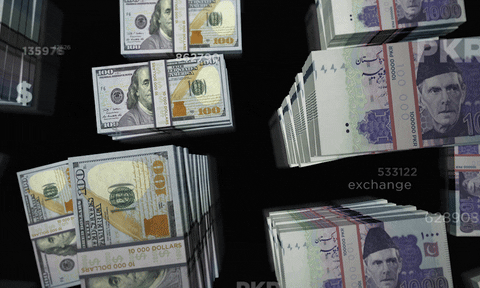The currency market looks confused. Over the past twelve months, export financing – both pre- and post-shipment – obtained against FE-25 deposits held with commercial banks has doubled, with 3MMA in May 2024 rising by 185 percent against the same period last year. Meanwhile, import financing against FE-25 is at its historic peak, flirting with the $1.5 billion barrier – and averaging above $1.4 billion for the last 12 months.
Granted, these numbers are a drop in Pakistan’s foreign trade bucket. Total outstanding trade financing against FE-25 is at just $2 billion – inclusive of both imports and exports – and a shame, even when accounting for Pakistan’s abysmal trade numbers. At total foreign goods trade of $85 billion during 2023-24, trade backed by FE-25 financing accounts for no more than 28 percent of total annual foreign goods trade, assuming an average FE loan tenor (turnover) of 30 days.

Yet, both FE-25-based import and export financing are on the rise, which escapes logic. At any given time under normal market conditions, either FE-based import financing or export financing should be in demand – not both. For example, if the exchange rate faces imminent depreciation, import-based FE financing would be in demand as importing firms would prefer to lock in their dollar liability at the prevailing exchange rate, so as to protect themselves against the risk of currency depreciating abnormally on the day of import payment (so long as the cost of financing is less than the loss on the exchange rate if importer opts for nil financing).
By the same token, when currency depreciation is imminent, or a significant adjustment in exchange rate is overdue, exporters would ordinarily not opt for FE-based financing, out of fear of losing out on the abnormal exchange gain on the day of export proceeds realization. By corollary, exporters may find comfort in seeking FE-based financing when the currency outlook is either stable – or, theoretically, if an appreciation is expected – as locking in the exchange rate today could potentially have no exchange gain or loss (or, even protect against a loss if the currency appreciates).

Yet today both import and export-based FE loans are on the rise. Part of the explanation of course is the central bank’s implicit policy encouraging commercial banks to find dollar cover for imports routed at their counter – rather than hunting for dollars in the inter-bank market. This, in part, explains, why import-based FE loans are at historic levels, crossing the $1.4 billion barrier for the first time in June 2023 when SBP’s foreign exchange reserves bottomed out. In fact, import financing has accounted for 80 percent of FE-25-based trade financing on average for the past 24 months, ever since Pakistan entered the currency crisis at the peak of the global commodity spiral in May 2022.
However, not all is what it seems. Why, for instance, is export FE lending on the rise too? Between Jul-22 to Aug-23, export-based FE loans bottomed out, staying under $200 million for over a year. In fact, at $167 million, the Mar-23 export FE reading was the lowest in at least 20 years (if not longer). Logically, export FE loans began rising from Sep-23, indicating that currency had finally bottomed out, and even appreciated to some extent between Sep and Dec 2023.

The real question, however, is why are export FE loans still rising. Despite marginal currency improvement since Dec-23, export FE loans outstanding have risen by 21 percent, breaching $500 million for the first time in four years. In fact, in recent months, FE export loans have been rising at a faster rate than FE import loans, which may have peaked. Part of the explanation may be the drawdown of export refinance lines; however, commercial Pak Rupee loans are still very much available. Why would exporters find dollar-based loans less riskier than rupee-based lending?
Most surprisingly, this is happening at a time when export bill discounting is out of demand, with foreign bill outstanding declining by almost half compared to its peak levels since Apr 2022. Are exporters pricing in imminent currency appreciation post-signing of a fresh IMF program? If that’s a yes, what are all the importers locking historic amounts of FE loans thinking?
Read the full story at the Business Recorder - Latest News website.

